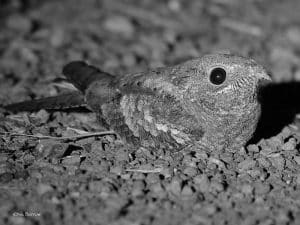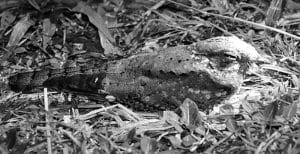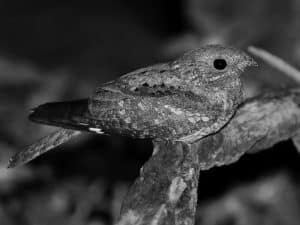Introduction to the plain nightjar
The plain nightjar (Caprimulgus inornatus) is a fascinating bird species found in Tanzania. It belongs to the family Caprimulgidae and is known for its remarkable camouflage and nocturnal behavior. The plain nightjar in Tanzania is a medium-sized bird, measuring about 9-10 inches in length. Despite its name, it is not plain at all. In fact, its intricate patterns and cryptic coloration help it blend seamlessly into its surroundings, making it difficult to spot during the day.
Habitat and distribution of the plain nightjar in Tanzania

The plain nightjar is primarily found in the eastern and southern regions of Tanzania. It inhabits a variety of habitats, including savannas, woodlands, and open grasslands. This bird species prefers areas with sparse vegetation, as it relies on its camouflage to avoid detection. The plain nightjar is a migratory bird, with most individuals spending the breeding season in Tanzania and then migrating to other parts of Africa during the non-breeding season.
Physical characteristics and adaptations of the plain nightjar
The plain nightjar has a unique set of physical characteristics and adaptations that make it a master of camouflage. Its feathers are beautifully patterned with shades of brown, gray, and black, which help it blend into tree bark, rocks, and leaf litter. The bird’s large eyes are positioned on the sides of its head, allowing it to have a wide field of vision, essential for spotting prey in the darkness. Furthermore, the plain nightjar has a large mouth with a wide gape that enables it to catch insects on the wing.
The bird’s most distinctive feature is its cryptic coloration, which matches its habitat perfectly. This adaptation allows the plain nightjar to remain hidden from predators during the day, blending seamlessly into the surrounding environment. Additionally, its feathers have a soft and fluffy texture, which aids in silent flight, allowing the bird to approach prey without alerting them to its presence.
Behavior and feeding habits of the plain nightjar
The plain nightjar is a nocturnal bird, meaning it is most active during the night. It spends its days roosting on the ground, relying on its camouflage to remain hidden from predators. As the sun sets and darkness falls, the plain nightjar emerges to hunt for its prey. It is an insectivorous bird, feeding primarily on moths, beetles, and other flying insects. The bird catches its prey in mid-air, using its wide gape and agile flight to capture insects on the wing.
The plain nightjar is known for its unique hunting technique called hawking. It flies low to the ground, sweeping its wings back and forth, creating a vacuum that sucks insects into its mouth. This hunting strategy allows the bird to catch a large number of insects in a short period, ensuring its survival in the challenging nocturnal environment. The plain nightjar is also equipped with specialized whisker-like feathers around its mouth, which help it detect and capture prey in the dark.
Breeding and nesting patterns of the plain nightjar
During the breeding season, which typically occurs between September and March, the plain nightjar engages in courtship displays to attract a mate. The male performs aerial displays, flying in a zigzag pattern and making distinctive calls to signal his availability to potential mates. Once a pair is formed, the female lays her eggs on the bare ground, often in a scrape or depression. The eggs are usually laid in well-camouflaged locations, such as under bushes or in the leaf litter, providing additional protection from predators.
Both the male and female take turns incubating the eggs, which hatch after approximately three weeks. The plain nightjar chicks are precocial, meaning they are able to leave the nest and walk shortly after hatching. The parents continue to care for the chicks, providing them with food and protection until they are able to fend for themselves. The breeding success of the plain nightjar is closely tied to the availability of suitable habitat and the presence of abundant insect populations.
Challenges faced by the plain nightjar population in Tanzania

The plain nightjar population in Tanzania faces several challenges that threaten its survival. Habitat loss and degradation due to human activities, such as deforestation and agriculture expansion, have significantly reduced the available nesting and foraging areas for these birds. Additionally, the use of pesticides in agricultural practices poses a threat to the plain nightjar’s main food source, as it directly affects the insect populations upon which the bird relies.
Climate change is another significant challenge for the plain nightjar population. Changes in temperature and rainfall patterns can disrupt the bird’s breeding and migration patterns, affecting its ability to find suitable nesting sites and reliable food sources. These factors combined contribute to the decline in the plain nightjar population in Tanzania.
Conservation efforts for the plain nightjar in Tanzania
To protect the plain nightjar and ensure its long-term survival in Tanzania, various conservation efforts are underway. National parks and protected areas play a crucial role in safeguarding the bird’s habitat. These protected areas provide a safe haven for the plain nightjar, preserving the natural ecosystems on which it depends. Additionally, initiatives focused on raising awareness about the importance of conservation and the plain nightjar’s role within the ecosystem are being implemented.
Efforts are also being made to promote sustainable land-use practices that minimize habitat destruction and degradation. This includes promoting responsible agriculture and forestry practices that prioritize the conservation of natural habitats. Furthermore, research and monitoring programs are being conducted to gather data on the plain nightjar population and its habitat requirements, aiding in the development of targeted conservation strategies.
Best places to observe the plain nightjar in Tanzania
Tanzania offers several excellent locations for observing the plain nightjar in its natural habitat. The Ruaha National Park, located in central Tanzania, is known for its diverse birdlife and is a great place to spot the plain nightjar. The park’s open grasslands and woodland areas provide ideal nesting and foraging grounds for these birds. The Mikumi National Park, in the eastern part of the country, is another fantastic spot for plain nightjar sightings. Its varied habitats, including savannas and acacia woodlands, attract a wide range of bird species, including the plain nightjar.
Tips for observing and photographing the plain nightjar

Observing and photographing the plain nightjar can be a rewarding experience for birdwatchers and photographers alike. Due to its excellent camouflage, spotting a plain nightjar during the day can be quite challenging. However, with patience and a keen eye, it is possible to catch a glimpse of this elusive bird. It is best to visit its preferred habitats during the early morning or late evening hours when the plain nightjar is more active.
When observing or photographing the plain nightjar, it is important to maintain a respectful distance and avoid disturbing the birds or their nesting sites. Using binoculars or a telephoto lens will allow you to observe the bird from a safe distance without causing any disturbance. Additionally, a tripod or other stabilizing equipment is recommended for capturing clear and steady photographs of the plain nightjar in its natural environment.
Conclusion: Appreciating the beauty and uniqueness of the plain nightjar in Tanzania
The plain nightjar is a truly remarkable bird species found in Tanzania. Its ability to blend seamlessly into its surroundings and its fascinating adaptations make it a true master of camouflage. However, the plain nightjar faces numerous challenges, including habitat loss and climate change, that threaten its population in Tanzania.
By implementing conservation efforts, raising awareness, and promoting sustainable land-use practices, we can help protect the plain nightjar and ensure its continued presence in Tanzania’s natural ecosystems. So, next time you find yourself in Tanzania, don’t forget to keep an eye out for the plain nightjar and appreciate the beauty and uniqueness of this incredible bird species.

































